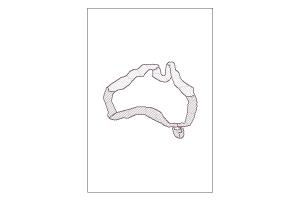OGC:WFS
Type of resources
Keywords
Publication year
Distribution Formats
Service types
Topics
-
This web service delivers metadata for onshore active and passive seismic surveys conducted across the Australian continent by Geoscience Australia and its collaborative partners. For active seismic this metadata includes survey header data, line location and positional information, and the energy source type and parameters used to acquire the seismic line data. For passive seismic this metadata includes information about station name and location, start and end dates, operators and instruments. The metadata are maintained in Geoscience Australia's onshore active seismic and passive seismic database, which is being added to as new surveys are undertaken. Links to datasets, reports and other publications for the seismic surveys are provided in the metadata.
-
This web service features Australian hydrogen projects that are actively in the investigation, construction, or operating phase, and that align with green hydrogen production methods as outlined in Australia's National Hydrogen Strategy. The purpose of this dataset is to provide a detailed snapshot of hydrogen activity across Australia, and includes location data, operator/organisation details, and descriptions for all hydrogen projects listed.
-
The Geology of the Northern Jetty Peninsula map service displays the shapefiles and tables of the basement geology of the Northern Jetty Peninsula in East Antarctica. This map service is derived from the map product ‘Geology of Northern Jetty Peninsula, Mac.Robertson Land, Antarctica'. Northern Jetty Peninsula, incorporating Else Platform (~140 km2) and Kamenistaja Platform (~15 km2), represents a mostly ice-free low-lying region located on the western flanks of the Lambert Graben. The region is underlain by granulite-facies Proterozoic gneisses and unmetamorphosed Permian sediments.
-
This service includes well geothermal temperature and location, extracted (from the OZTemp database), and used to create the 'OZTemp Interpreted Temperature at 5km Depth' image of Australia.
-
This web service provides access to the National Telephone Exchanges dataset and presents the spatial locations of all the known telephone exchange facilities located within Australia, all complemented with feature attribution.
-
This web service provides access to the National Desalination Plants dataset and presents the spatial locations of all the known major desalination plants within Australia, all complemented with feature attribution.
-
The National Areas of Interest Layer for Seabed Mapping and Biodiversity Characterisation is an active WFS sustained by the Areas of Interest functionality of the AusSeabed Survey Coordination Tool (ASB SCT). The redevelopment of the functionality and tool were supported by in-kind investments from AusSeabed, FrontierSI, and the National Environmental Science Program Marine and Coastal Hub (MaC Hub) under a scoping project agreement. Objective: The Areas of Interest functionality allows organisations and communities to publish their seabed data needs through the AusSeabed portal as part of the Areas of Interest layer. When different organisations identify the same regions as Areas of Interest, it helps generate understanding of the regions where there is the greatest cumulative need for data. This will help prioritise the highest value areas for data acquisition or legacy data release. It will also allow different groups to see where they have common priorities and increase opportunities for collaboration.
-
This web service provides access to the National Local Government Area Council Offices dataset and presents the spatial locations of all known Local Government Area council office facilities within Australia, all complemented with feature attribution.
-

The Australian Coastal Sediment Compartments Web Service provide a hierarchical spatial classification relevant to the assessment of sediment movement in the Australian coastal zone, and represent a tool to assist coastal planning and management. Additional spatial data layers produced during the development of the compartments are provided for reference.
-
The Layered Geology of Australia web map service is a seamless national coverage of Australia’s surface and subsurface geology. Geology concealed under younger cover units are mapped by effectively removing the overlying stratigraphy (Liu et al., 2015). This dataset is a layered product and comprises five chronostratigraphic time slices: Cenozoic, Mesozoic, Paleozoic, Neoproterozoic, and Pre-Neoproterozoic. As an example, the Mesozoic time slice (or layer) shows Mesozoic age geology that would be present if all Cenozoic units were removed. The Pre-Neoproterozoic time slice shows what would be visible if all Neoproterozoic, Paleozoic, Mesozoic, and Cenozoic units were removed. The Cenozoic time slice layer for the national dataset was extracted from Raymond et al., 2012. Surface Geology of Australia, 1:1 000 000 scale, 2012 edition. Geoscience Australia, Canberra.
